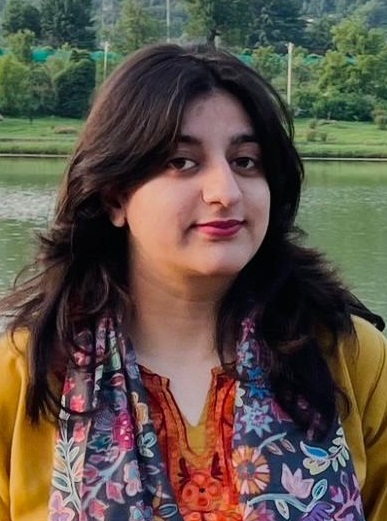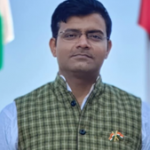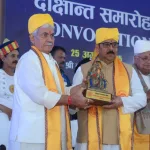The current times quietly record the unseen crimes not through violence, but through slow surrender, where people lose six, eight, sometimes ten hours a day not to work or rest, but simply to escape. What starts as a relief turns into ritual. They devote themselves to the next high until their mind which was once full of thoughts and life is left as empty as a wiped slate, and their neurons are numb with their realities blurred. What initially begins as an escape becomes something deeper not devotion to a belief, but to the chemicals in the brain.
The substance doesn’t just enter the body, it takes over the person thought by thought, breath by breath, it numbs the mind until the light inside begins to dim. It never starts with the drug. It starts with a thought, a need to cope, an impulsive urge to try something new, or sometimes being misled into something they don’t yet understand.
It begins with trying to feel okay or at times, trying not to feel anything at all. Behind the bottle, the needle, the pill it’s rarely about chasing pleasure. It’s about the pain they come across, the loss and the longing for silence from the noise which prevails in their minds. A desperate search for peace, even if it only lasts a moment.
The hallway never sleeps. Patients keep walking in, calmly describing how easy it is to get drugs some even say it’s as simple as buying a soft drink. One patient sits across from me, physically present but mentally chained to years of use. Then comes another this time with his parents. A father holding onto hope like it’s the only thread keeping his son alive. The son has returned not from a trip, but from the edge of disappearance. Their stories vary, but the themes repeat: lack of awareness, early exposure, unchecked emotions, and a system too slow to intervene.
Sometimes I think of the place we called the Valley of Saints. It’s a myth we still cling to, once a coat of culture and peace now stained by heroin, cocaine, cannabis, and weed. On almost every street in the valley, these substances flow more freely than we’d like to admit. From the banks of the Jhelum to the sacred shrines, young people are often more lost in their minds than the grounds they are present on.
The fumes of drugs can be smelled in the air around a school bus headed toward even the most prestigious institutions. It raises not just one, but a hundred questions, the loudest of them all: What if? What if we had seen this coming?
What if we had acted earlier? For many, that first exposure comes casually a cigarette passed around during a gathering, a pill offered during exam season, a drink that becomes two, then ten. Addiction is more than what how we define it. It is, at its core, a dysfunction of neurotransmitters.
What was once meant to regulate joy, motivation, and reward begins to demand more than the body can bear. And when life calls for responsibility, the addicted brain no longer listens. It craves only the shortcut: the hit, the high, the escape. It doesn’t just stop at altering brain chemistry. It changes identity, beliefs, and behavior. It replaces meaning with avoidance, and reality with a cycle of numbness.
Lives that were once felt and lived fully are reduced to chemically driven routines and when the withdrawal comes the tremors, the panic, the emptiness they’re felt to the core. Survival becomes the only goal, pushing the idea of truly living to the side. It’s no longer about living, and it switches to surviving.
Emotional resilience is possible, but it doesn’t grow in isolation. The pain that leads to addiction is tragically universal, even though we act like it’s rare. Peer pressure, especially among the youth, is often one of the strongest entry points.
What begins as something innocent a gathering of friends slowly turns into the birthplace of dependence and then come the life stressors: unspoken emotional pain, feeling misunderstood, the burden of not meeting expectations. Young people are pulled into a loop where they stop seeking approval and start chasing relief.
One of the patients I worked with described addiction as invisible handcuffs chains that hold on tightly, even when one is trying to run. Parenting, too, plays a complicated role. Often, we give our children too much without teaching them limits or caring about how they’re going to use the unfiltered access to what we provide. When a child asks for an apple, we offer a dozen instead. We justify it by saying, “If not for our child, then who are we doing this for?”
But love without boundaries leads to indulgence, and indulgence without guidance leads to confusion which eventually comes at the cost of destruction. By the time reality hits, the child is already lost in a world where nothing ever feels like enough. And for women, the pain is buried even deeper under layers of silence and stigma. Asking for help is still seen as something shameful. They’re not seen as people in pain; they’re seen as the pain itself. The silence around them isn’t just cruel, it’s deadly.
The cycle is brutal: earn, use, and survive. And when the money runs out, desperation takes over. Theft. Shared needles. Unsafe practices. With that comes a rise in disease, and at times, even crime. The system is broken and the easy availability of drugs preys on those with the least left to lose.
Everyone talks about how bad drug use is. But no one talks about why it happens. Almost every patient I meet says the same thing: “No one taught us about this.” No one ever explained what healthy coping looks like how to deal with grief, or how to recognize the early signs of dependence. That education was missing.
And in that silence, addiction quietly took root, growing in the blind spots of our homes, schools, and communities. So where did we go wrong as a society? We stopped questioning our values. We stopped listening, truly listening and now, our morals lie scattered across the same streets where the laughter of youth once echoed.
We built systems that punished addiction, but never addressed the pain behind it. We talk about the consequences of drug use, but rarely about the reasons people turn to drugs in the first place.
Addiction doesn’t wear labels at first but the signs are always there in the loneliness, the quiet detachment, the restless search for something, anything, that feels like relief. If we truly want to fight this crisis, we need to act before it becomes clinical before detox, before rehab, before lives are broken down into pieces that must be painfully reassembled.
We must work collectively as a community that pays attention. We need to educate, to talk, to normalize conversations about substance addiction and seeking help for the same. From peer groups to parenting styles, from school systems to healthcare, every layer of our society needs to stay awake and involved. Because prevention doesn’t happen in recovery rooms; it happens in classrooms, in homes, and in conversations that are long overdue.
Despite everything, I still see hope. I see it in the fog of withdrawal, in the quiet between sobs, in a father’s trembling hands, or in a patient’s first night clean. In those fragile moments, something remains a small flame, a chance. Every day, I sit across the ward, listening not just to words, but to what’s behind them and even in the most broken voice, there is something left and that is ‘hope’. If there’s even a trace of it, maybe there’s still something someone we can save.
(Author is student of clinical psychology. Email: [email protected])








